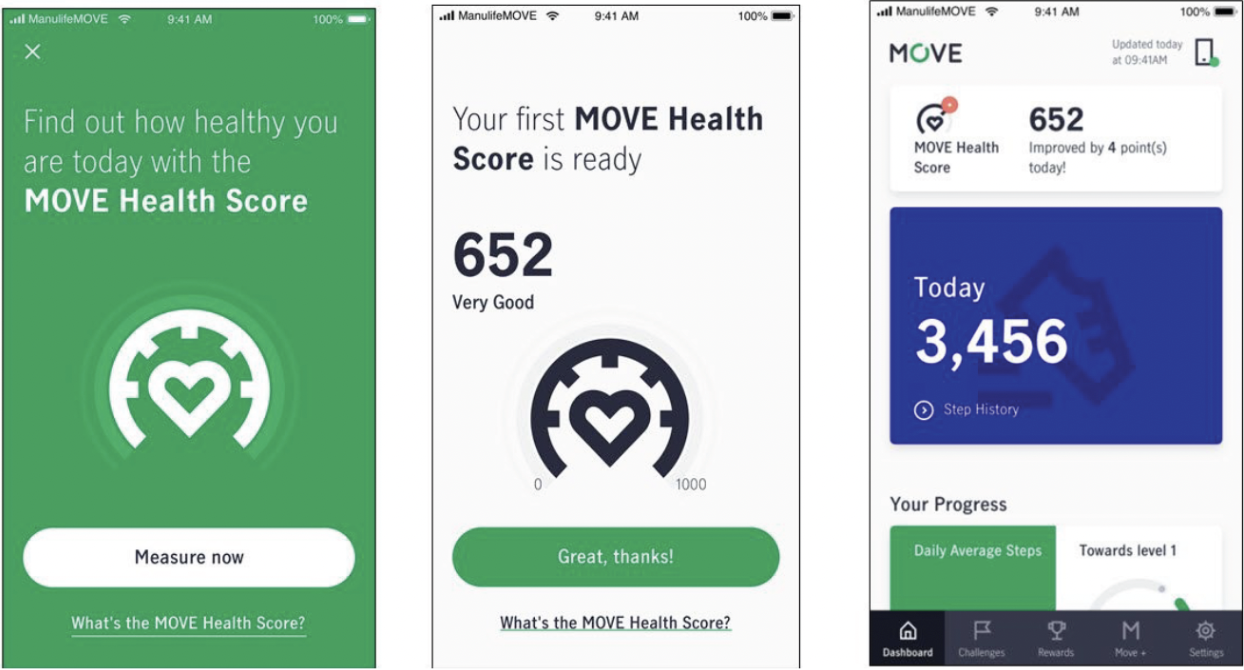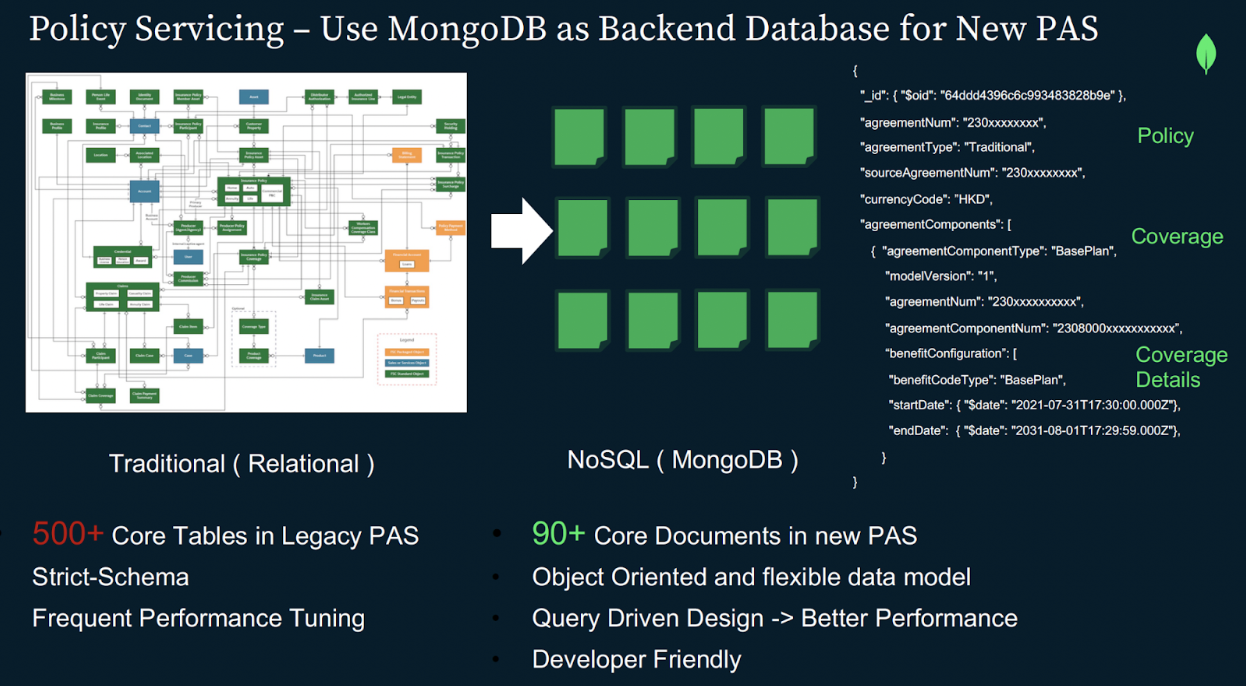

Why Leading Insurer Manulife Ditched SQL For MongoDB
source link: https://www.mongodb.com/blog/post/why-leading-insurer-manulife-ditched-sql-for-mongodb
Go to the source link to view the article. You can view the picture content, updated content and better typesetting reading experience. If the link is broken, please click the button below to view the snapshot at that time.

Manulife, one of the largest life insurance companies in the world, is in the midst of a digital transformation.
Earlier this year, Harry Cheung, Chief Architect of Manulife Asia, spoke to industry experts and developers at MongoDB.local in Hong Kong, outlining the transformation journey so far and what’s next for Manulife.
Better experiences, happier customers
Manulife, like many large enterprises, is under pressure to get new digital products to market, fast. In addition, the insurer is constantly looking for ways to better connect with and serve customers, in real time, by broadening their digital capabilities and further personalizing the interactions customers have with Manulife.
Manulife’s existing data infrastructure, however, was becoming a drag on innovation. Traditional relational databases limited how fast the Manulife team could bring new digital products to market. In particular, Manulife’s developers, the architects of these new digital products and services, faced issues working with the existing data infrastructure, including the need to constantly optimize the database, deal with data normalization issues, and work with slow querying of data.
From Relational to NoSQL to MongoDB
From the outset, Manulife knew that they would build their new digital experience on a NoSQL database.
NoSQL is core to our strategy of building our digital experience. The flexible data model [for NoSQL] means you’re not limited by the schema.
Harry Cheung, Chief Architect, Manulife Asia
After deciding to go the NoSQL, Manulife was won over to MongoDB for several reasons, including:
-
The document data model: MongoDB's document data model means no rigid schemas to slow down development. This allows for faster iterations when building new digital products.
-
From on-premises to the cloud: Moving from a MongoDB on-premises deployment to MongoDB Atlas in the cloud was easy for the Manulife team.
-
Scalability: MongoDB can easily scale horizontally to meet spikes in demand.
-
Enterprise-ready & mature: MongoDB is used by the world’s largest insurers, offering greater flexibility alongside the sorts of core requirements you would expect from an RDBMS, such as ACID transactions.
-
MongoDB Support: Assistance with projects like data migration from on-premises to cloud services on MongoDB Atlas made the transition smoother.
-
A pay-as-you-go model: MongoDB’s elastic scaling capabilities and flexible pricing model keep costs down.
-
On and offline functionality: MongoDB Atlas has built-in mobile device synchronization capabilities, speeding up the development of offline-first insurance applications.
Built with MongoDB: Four Use Cases for Manulife
MOVE, a Health-Focused App: MOVE is a digital app that encourages users to meet fitness goals, with daily steps linked to insurance premium discounts. MongoDB's JSON-based document model simplified app development and data management.
Secondly, Manulife started running the MOVE app on-premises. When they wanted to migrate the app to a public cloud of their choice (from MongoDB to MongoDB Atlas) the process was seamless.

Sales Assistance App: Used by 90% of agents, this app helps Manulife agents in the field service customers and complete applications.
One area where MongoDB Atlas was particularly helpful was mitigating issues with mobile connectivity and data synchronization. Agents in the field often suffer from internet service interruptions, such as a dropped mobile signal. When the agent’s sales app reconnects, the data from the app has to be synchronized with the backend MongoDB database.
Building apps that can handle such offline/online data synchronization, also known as offline-first apps, can significantly eat into development time, slowing time to value for organizations developing robust offline-first apps. MongoDB Atlas Device Sync solves this issue with native offline to online synchronization capabilities to enable uninterrupted client interactions, even in low connectivity areas.
Using Atlas Device Sync, the sales app can store customer, proposal, application, and document metadata on the local device (using MongoDB’s dedicated mobile device database), and then synchronize that data and the customer application to the main MongoDB database when connected to the internet.
Manulife launched their sales app's offline mode in just 2 months with MongoDB Atlas Device Sync
Policy Life Cycle Management: Traditional relational databases spread policy data across multiple tables. With MongoDB, a single document can encapsulate an entire policy, streamlining querying access and enhancing performance. MongoDB is now the system of record for policy servicing and life cycle management. This new system was met with overwhelming approval from Manulife’s developers.
In the past, we were using a traditional relational database, with more than 500 core tables. With MongoDB, when I asked developers who had previously used our traditional [RDBMS] database, ‘You have a choice, do you want to use MongoDB or go back to the traditional [database]?’ all our developers said MongoDB.
Harry Cheung, Chief Architect, Manulife Asia

Claims Processing: MongoDB's capability to handle structured and unstructured data simplified integration with partners, especially in Optical Character Recognition (OCR) for claim processes.
Looking ahead
Manulife is set on expanding its use of NoSQL databases, with MongoDB identified as the go-to solution for such projects.
MongoDB is our internal standard. MongoDB is our strategic partner for NoSQL development.
Harry Cheung, Chief Architect, Manulife Asia
About Manulife
Manulife Financial Corporation is one of the largest life insurance companies in the world. The company provides insurance and financial services to millions of customers in Asia, Canada, and the United States.
Manulife operates under different brand names: Manulife in North America and Asia, and John Hancock in the U.S. It's recognized for its long-standing presence in Hong Kong, with a focus on life insurance, mutual funds, and other financial products.
In addition to life insurance, Manulife offers a wide range of financial services including wealth and asset management, group benefits, and retirement services.
Learn more about our work with the world's leading insurers on our MongoDB for Insurance page.
Recommend
About Joyk
Aggregate valuable and interesting links.
Joyk means Joy of geeK